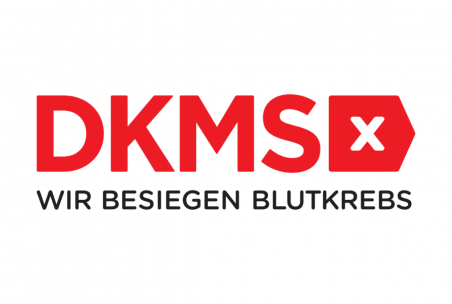
Whether a global player, SME or family-run business, companies can play a key role in our fight against blood cancer. By setting up an internal registration initiative, you can give patients all over the world a second chance at life.
Somebody in Germany is diagnosed with blood cancer every 15 minutes. inovex employee Patrick had the chance to save a human life with his donation.
Blood cancer is an umbrella term for malignant diseases of the bone marrow and haemopoietic system, such as leukaemia, a disease in which white blood cells degenerate and suppress other blood components. This type of disease may be acute or chronic, but can quickly prove fatal without treatment. Stem cell donation offers the only chance of a cure, although one in ten patients is unable to find a donor. The DKMS – German Bone Marrow Donor File – has set itself the goal of finding a suitable donor for every blood cancer patient or providing access to therapy – all over the world.
We know from the conversations we’ve had that many colleagues at inovex are registered with the DKMS as potential donors for personal reasons. Patrick Schulte, who works at inovex in the area of data management and analytics, also signed up to the register eight years ago. Then, at the start of 2019, he received an enquiry from the DKMS asking whether he would be prepared to become a donor for a patient.
‘Initially, I was naturally apprehensive about what to expect, but the complete professionalism and transparency shown by the DKMS soon reassured me. As such, I quickly made the decision to give somebody a second chance at life and I don’t regret it for a single second.’
Patrick’s decision to become a donor naturally also had an impact on his job at inovex. However, the DKMS meets the cost of any absence (for the initial examination and subsequent donation) as well as travel and accommodation expenses (including an accompanying person).
As a company, however, we also wanted to play our part, which is why we donated the amount of the loss of earnings to the DKMS, so that there are no costs for the DKMS. So even with a small commitment companies have the opportunity to support the DKMS. We hope that other companies will follow suit. If the DKMS is prepared to cover the cost of an absent employee, then the least we can do is make a financial contribution in another way.
Here is another brief summary of all the important information:
Any healthy person aged between 17 and 55 who is not already registered with the DKMS or on another register can essentially become a stem cell donor. To do so, a registration set can be requested online from the DKMS. This is sent by post and contains a cheek swab set. The swabs must then be returned to the DKMS together with the signed documents. The tissue characteristics are analysed in a laboratory and it is possible to determine whether the characteristics match those of a blood cancer patient. If a ‘genetic twin’ is found, the donor will be given a health check and informed about the procedure by a doctor – assuming the donor has granted their consent to donate.
The following donation methods are used:
Good to know: There is a 99% chance of curing the disease after the transplant!
Tissue characteristics are passed down from parents to their children. However, only a third of patients who need stem cells find a suitable donor within their own family. Since the likelihood of finding a suitable donor outside of the family is very small, there are organisations like the DKMS, which not only conducts research into finding a cure for blood cancer, but also maintains a database of patients and donors in order to find genetic twins. The more donors who register their tissue characteristics, the more second chances at life can be offered to blood cancer patients.
Getting to know the patient